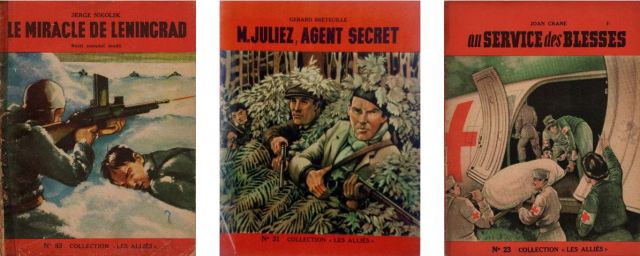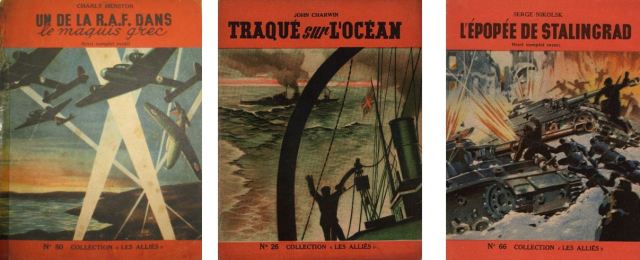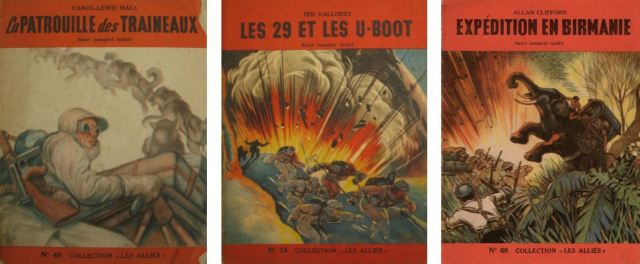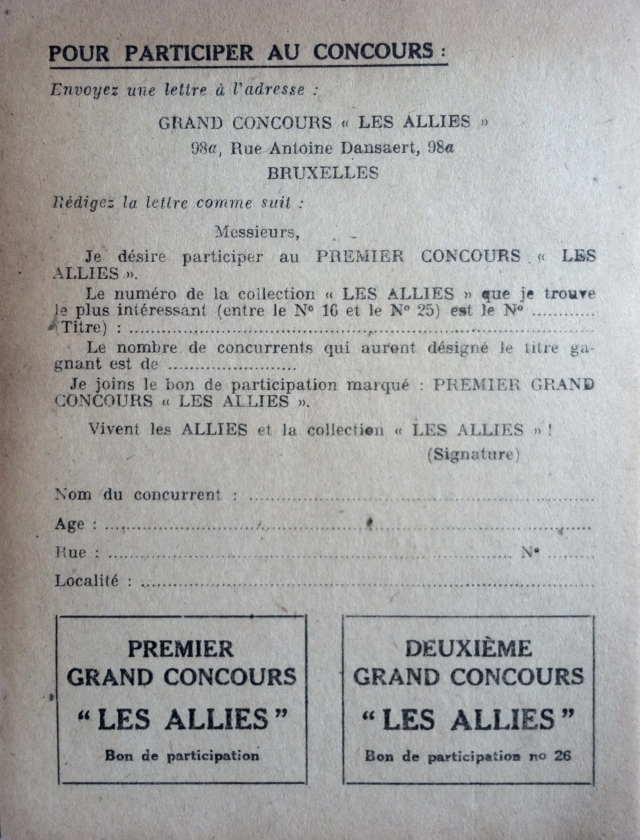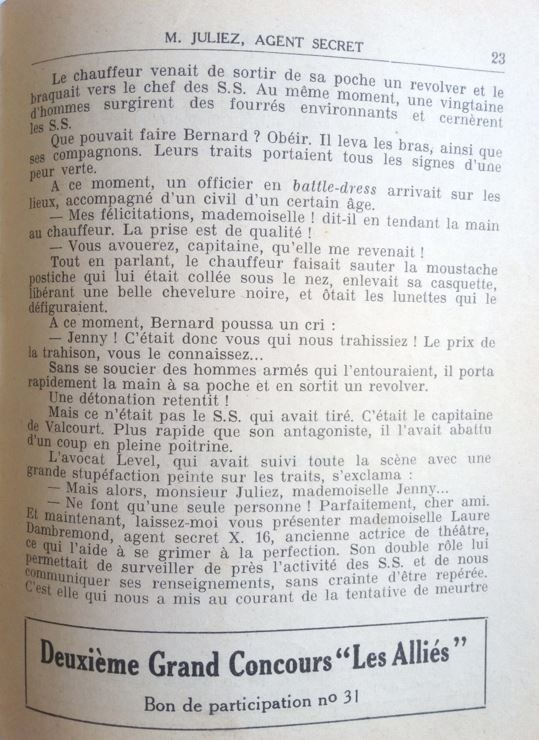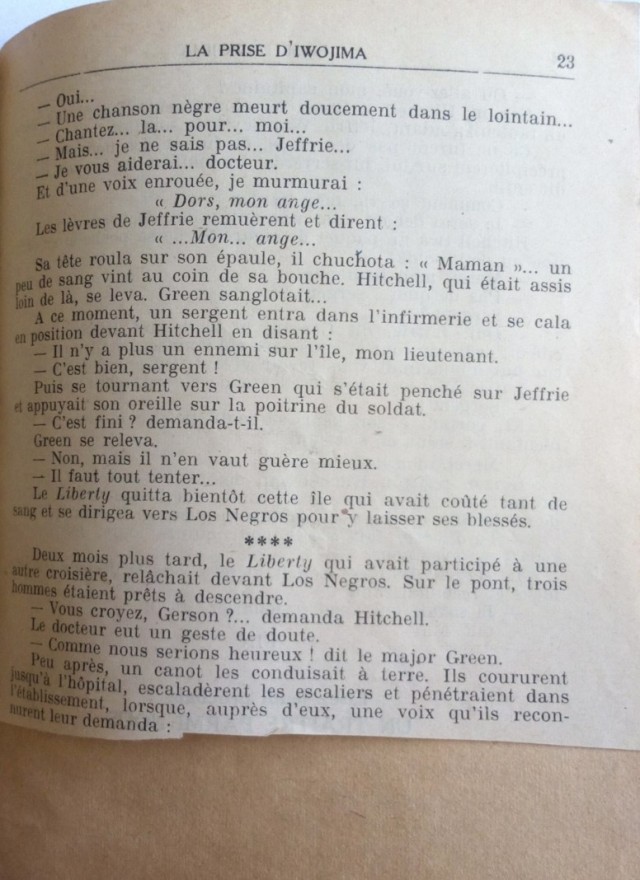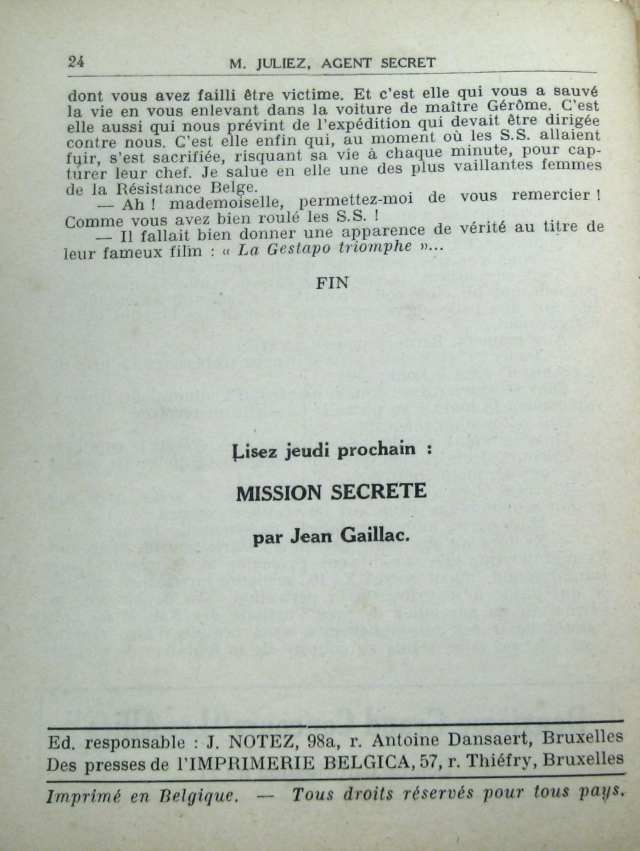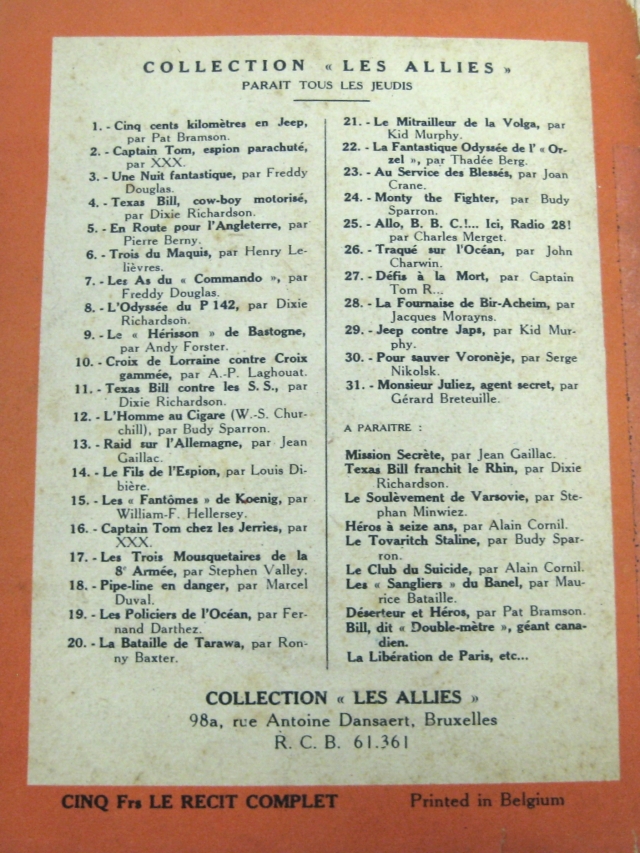As the cataloguing of the remainder of the Chadwyck-Healey collection is progressing, we want to shed light on some of the items which have been recently catalogued. In February, Anne-Laure Lacour and Clara Panozzo completed the full cataloguing of a series of booklets of juvenile literature, the Collection “Les alliés”, published in Brussels between 1944 and 1947. With about 400 items, consisting of individual publications as well as series, children’s literature represents a significant portion of the Liberation collection.
 There are 120 issues of “Les alliés”, small booklets of 24 to 32 pages (16 x 12 cm) which range from Liberation.c.1456 to Liberation.c.1574 (we are only missing one of the last issues, no 118, and as we write, no 114 is being shipped to us). “Les alliés” was a weekly publication, appearing on Thursdays. Only number 1 is dated (30-XI-44) so we can infer that the four or five first items were published in 1944, the following 52 in 1945 (if they kept up with publishing every week, including over Christmas), the following 52 in 1946 and the last issues in 1947.
There are 120 issues of “Les alliés”, small booklets of 24 to 32 pages (16 x 12 cm) which range from Liberation.c.1456 to Liberation.c.1574 (we are only missing one of the last issues, no 118, and as we write, no 114 is being shipped to us). “Les alliés” was a weekly publication, appearing on Thursdays. Only number 1 is dated (30-XI-44) so we can infer that the four or five first items were published in 1944, the following 52 in 1945 (if they kept up with publishing every week, including over Christmas), the following 52 in 1946 and the last issues in 1947.
Most authors in the series have American-sounding pseudonyms (Dixie Richardson, author of Texas Bill, cow-boy motorisé; L’odyssée du P.142; Texas Bill contre les S.S. and Texas Bill chez les Nazis; Ronny Baxter, La bataille de Tarawa and L’enfer de la jungle; Frank Rowlands, La guerre des microbes n’aura pas lieu and Le sabotage du S.S. Cormoran, etc.).
Some have Russian (Serge Nikolsk, author of 8 titles: 30, Pour sauver Voronèje; 38, Les diables rouges de la steppe; 43, Les marais du Pripec; 66, L’épopée de Stalingrad; 70, “Der Wolf” terreur des Nazis; 83, Le miracle de Leningrad; 95, Les cosaques à Bielgorod; and 108, Le fantôme des neiges) or francophone-sounding names (Alain Cornil, Héros à seize ans –this may be the work of the Belgian comics writer and mystery novelist André-Paul Duchâteau–; Gérard Breteuille, M . Juliez, agent secret). Though it tends to be the exception, some books seem to have been written by female authors (Joan Crane, Au service des blessés: carnet de route d’une ambulancière américaine; Ellys Golder, Pilote d’essai, whose heroin is called Rose-Marie).
Most of the “Les alliés” books tell of heroic battles and adventures which unfold on all continents and whose (mostly armed) protagonists appear on planes, ships, tanks, jeeps etc., but also use less conventional means of transport such as sledge, skis, and even elephants, which usually feature on the action-driven, often explosive cover picture.
A particularly interesting cover illustration is that of number 33 in the series, La prise d’Iwojima (Japan) based on a famous Pulitzer prize photograph by Joe Rosenthal, which was also used as a basis for an American 1945 war-bond poster.
The editors of “Les alliés” used clever marketing strategies, advertising a recurrent “concours” by which readers could collect and send ten coupons cut out from the last page of individual volumes in order to win a cash prize or a subscription to the series for different lengths of time (from 1 year to 3 months). We actually have evidence of readers cutting out their booklets to participate in the concours!
The last page featured the title and author of the issue due to be published the following Thursday, while the back cover presented a numbered list of previously published and forthcoming titles, thus encouraging readers to collect the whole series. This, together with the cover illustrations on a distinctive red background and the brevity of the publications, made the series very attractive to young readers and fostered their loyalty.
Irène Fabry-Tehranchi and Clara Panozzo



